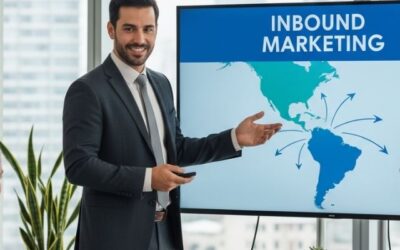A few months ago, we had a call with a promising prospect: the marketing director of a technology corporation who was desperately looking for strategies for lead generation in B2B marketing. The conversation wasn’t anything out of the ordinary, but what caught my attention was his “obsession” with generating “hot leads” or “ready-to-buy” leads.
This marketing manager wasn’t the only one with this type of request. In the middle of the pandemic, some of our customers held virtual meetings to discuss strategies to generate leads that are ready to make a purchase.
Considering this trend, we decided to put together some thoughts on why being hungry for “ready-to-buy leads” could be detrimental to your company. This mindset may lead you to make the wrong decisions and spend your marketing budget on activities that don’t deliver the best results.
We want to cover this subject because now that we are living in uncertain times, you may be looking for ways to help your sales team sell more (if you’re a marketing manager) or hit your sales quota (if you’re a salesperson).
In the end, what we want to point out is that the search for “hot leads” is nothing but fruitless, as leads that are already warm are very rare in B2B. Instead, a more effective approach is to “warm up” cold leads with relevant information and your unique value proposition.
In this post, we’ll tell you why dismissing cold leads may be a terrible mistake, how to implement some strategies for lead generation and, finally, we’ll share some suggestions to help you warm up your leads.
Strategies for Lead Generation

In B2B marketing and sales, lead generation is the process of attracting potential “corporate” customers who may be interested in purchasing your product or service and capturing their personal information/contact details.
Some typical strategies to generate leads are:
- Creating relevant content tied to downloadable offers on your website. (This one is my favorite along with the next one.)
- Launching lead generation ads on social media and Google Ads to encourage prospects to provide their contact details in exchange for valuable information.
- Sponsor virtual events from third parties or host your own virtual event.
- Launch lead generation programs with trade publications.
- And the worst tactic of them all, buying contact lists or databases.
There are two important points here that you need to be aware of. First, when we say “corporate” customers, we mean selling to other corporations (B2B lead generation), which entails a different process than selling to the average consumer (B2C lead generation). And second, a challenge with lead generation in the B2B world is recognizing that even when we are selling to companies, at the end of the day, the buyer is still human.
Yeah, I know, it can seem contradictory.
There are critical differences between marketing to B2B and B2C audiences. As we pointed out some time ago in our article “Some Ideas for B2B Marketing,” these are some key points of comparison:
| Points of Comparison | B2C | B2B |
|---|---|---|
| Target Market | Consumers. | Other businesses. |
| Market Size | Large. | Small and specific. |
| Brand Message | Product-focused. | Focused on the customers’ problems. |
| Sales cycle | Short. | Long. |
| Buying process | Simple, transactional. | Multiple steps. (There may even be a buying committee.) |
| Decision-making process | Emotions drive buying decisions (price, status or desire). | It’s a results-driven, considered process. A corporate buyer typically invests plenty of time researching options to solve a problem. |
Consequently, when defining strategies for lead generation in B2B lead generation, keep in mind these differences to increase your chances of success.
This is something you may have already realized: online B2B lead generation is crucial today, as most in-person meetings are at a halt since 2020, and we don’t know when corporate travel and meetings will return to normal.
Why Dismissing Your TOFU Leads is a Terrible Mistake

Accompanied by the hunger to specifically generate warm leads, we’ve noticed the intention to dismiss prospects at the top-of-the-funnel (or ToFu, as we abbreviate it in marketing). However, according to the experts, this may turn out to be a big mistake.
We interviewed Kyle Jepson, Senior Inbound Sales Professor at HubSpot on this topic, and he shared an interesting perspective.
According to Kyle, as sales representatives have a quote to hit every month or quarter, they want to focus on ready-to-buy leads, and leads that aren’t ready to buy within a month (or in six months to a year) are perceived as worthless.
“This leads to a vicious cycle where salespeople exhaust their entire sales pipeline each month and have to start searching for more hot leads to fill the gap,” Kyle said.
Nonetheless, it will be impossible for a salesperson to focus on long-term leads if the organization’s leaders aren’t on board.
What would be the result if sales leaders see the value of building a long-term funnel? In that case, the company will be willing to invest in strategies such as content marketing, social media marketing, education video marketing, and even will be willing to invest in building a business development team to prospect for potential customers.
In this scenario, the salesperson will still focus on ready-to-buy leads, but, as Kyle says, they are warm leads that already have a relationship with your company and have been nurtured with relevant information.
How to Warm Your B2B Leads?
Traditionally, the conversation between marketing and sales teams encounters a dilemma: the marketing team does whatever they can to bring B2B leads and, on many occasions, the sales teams return them (or even worse, ignore them), complaining that “those leads aren’t ready to purchase.”
Here’s one of the biggest lies of all time: “Our company, magazine, agency, event, etc., will get you hundreds of qualified leads.” Why is this a lie? Because even when the vendor provides you with a list of decision-makers from top corporations, it doesn’t mean that those people are ready to buy from you or asked to be approached by you.
And there is always a risk. Entertain the idea of your salespeople making cold calls or sending out emails to people who don’t know what you do or sell and never asked to be contacted by you. Disconcerting, isn’t it?
There could be instances where your sales team is approached by a potential customer asking for a quote because they have a decent budget to invest, but guess what? There is a higher risk in those too-good-to-be-true opportunities.
“The dangerous thing about ready to buy leads is that they’re ready to buy–which often means they’re already working with someone else. A lot of times, what happens is a company will have already decided on a vendor, but the Finance team insists on getting quotes from some competitors, and all these sales teams who are looking for “ready to buy” leads come rushing in,” Kyle said.
And the real problem is that, at this point, it may be too late. The decision has already been made, and all you can do is compete on price, which isn’t always possible.
But suppose your company attracts the right leads. In that case, it will have the chance to nurture them (or warm them up) with valuable content that focuses on their needs and pain points until they are ready to buy, positioning itself as a referent and expert in its industry.
Bringing Marketing and Sales as One Team

What we’re suggesting is that to avoid targeting the wrong audience and to ease the typical lead quality issue between marketing and sales, it may be useful for your company to implement a sales enablement process.
What is sales enablement? According to HubSpot, sales enablement is the processes, content and technology that empowers sales teams to sell efficiently at a higher velocity. And marketing is well-equipped to support sales in this project. But both areas need to be brought together as one team to make it work.
Precisely, three essential components of a sales enablement program are:
- The definition of your Ideal Customer Profile or ICP (the right leads)
- The signals that indicate that a lead is interested in your offers (interaction with your marketing materials)
- The construction of your Buyer Personas (which will help you understand the needs of the audiences you’re trying to reach)
On this aspect, Kyle Jepson says: “If you invest some time defining your ICP and researching the problems and questions people want your product to solve, then you can provide education (blog posts, explainer videos, social media posts, consultations, free trials) that people will turn to before they’re ready to buy, and then you’ll already be a trusted partner when they are ready to buy. Then you’ll be the default choice, and your competitors will be scrambling to compete with you.”
Final Thoughts on B2B Lead Generation
To summarize, for an effective B2B lead generation process, your company has to:
- Allocate some time to identify its ideal customers.
- Determine the pain points of the decision-makers in those companies.
- Create the content pieces and the systems to nurture leads and convert them into visitors.
- And, finally, pass them to sales only when they seem ready for a conversation with your sales team.
It is clear that the COVID pandemic has brought stress to the business world, and it is completely understandable. It’s evident that companies are deeply interested in pursuing the “low hanging fruit” when we need to spare resources.
Experts, such as Kyle Jepson, consider it a mistake when sales teams want to focus exclusively on the “ready-to-buy” lead approach. It may look like the best approach, but the lead-warming system will render better results in the long term.
And don’t worry. Creating relevant content isn’t that complicated. Your sales team are experts in the industry, and they have tons of content ideas. They know your customers’ problems, how your solution helps solve them, and even how it compares with your competitor’s.
Our final recommendation is to use all that knowledge from your sales team to create relevant content, define with your marketing and sales teams what kind of leads you should attract, and reach an agreement for them to contact every one of those leads.
As a result, your company will have built a fantastic sales machine that sells efficiently and at a higher velocity.








